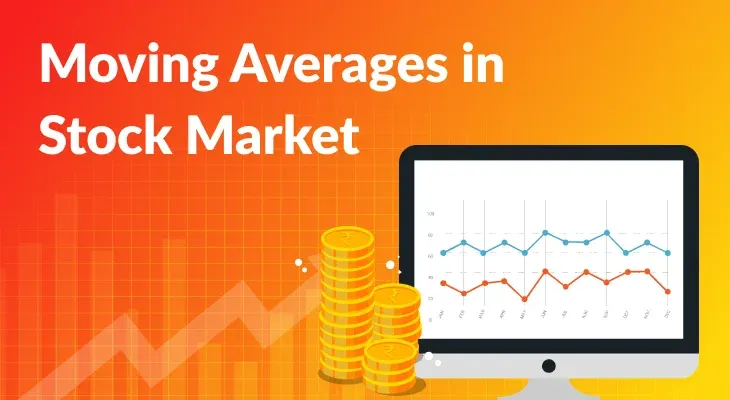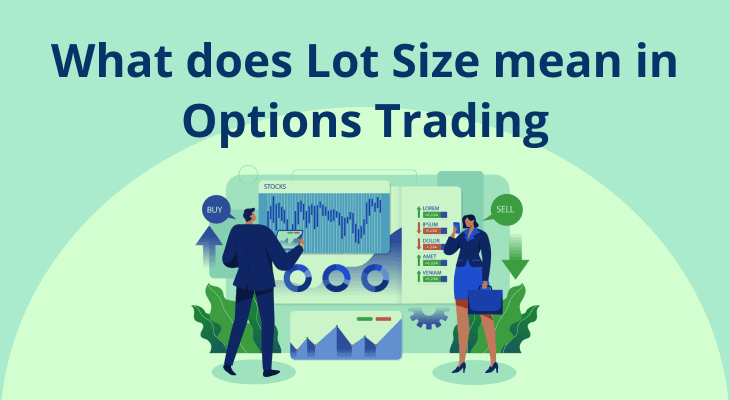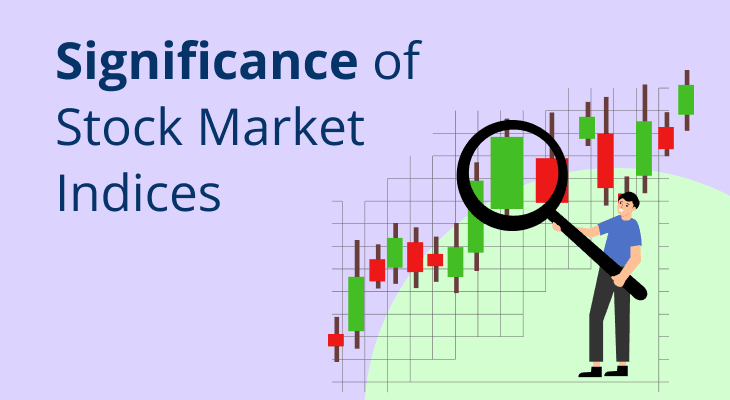
Moving Averages in Stocks
Technical analysis of stocks involves detailed study of historical data, price movements, and volumes traded to arrive at trends and patterns that can predict future movements. A moving average (MA) is a widely used technical analysis tool that helps traders and investors identify buying and selling opportunities in financial markets. In this article, we will take an in-depth look at moving averages and how to use it.
What is moving average?
Moving average is calculated by taking the average of a specified number of data points over a particular period of time and shifting the result forward or backward in time. The result is a line that represents the average value of the data over a given time period, which can help to identify the direction and strength of a trend. The fact that it is recalculated periodically based on the current price information, is the origin of the term “moving” average.
Types of Moving Average indicators
Simple moving average (SMA) and exponential moving average (EMA) are the two main types of moving averages. While the SMA is calculated by taking the arithmetic mean of a set of data points over a definite time-frame, the EMA assigns greater weight to more recent data points, resulting in a more responsive line. Here’s more on the two.
Simple Moving Average
A simple moving average (SMA) is calculated by adding up the values of a set of data points over a specific time period and dividing the sum by the number of data points in that period. The formula used is: SMA = (A1 + A2 + ……….An) / n
In this formula, A is the average in period n, while n is the number of periods
For example, let's say we want to calculate the 5-day SMA for the closing price of a stock. We would add up the closing prices of the last 5 trading days and then divide the sum by 5. If the closing prices for the last 5 trading days were ₹10, ₹11, ₹12, ₹11, and ₹10, then the 5-day SMA would be calculated as follows:
(10 + 11 + 12 + 11 + 10) / 5 = 10.8
So the 5-day SMA for this stock would be 10.8. This value can be plotted on a chart to help identify trends in the stock's price movement. Traders and analysts often use moving averages to help identify potential buying and selling opportunities based on the direction and slope of the SMA line.
Exponential Moving Average
An exponential moving average (EMA) is more responsive to recent price movements compared to the simple moving average (SMA). It is calculated by taking a weighted average of the data points, where the weight given to each data point decreases exponentially as we move back in time.
The formula for calculating the EMA is:
EMA = (Current Price - EMA[Previous Day]) * (2 / n+1) + EMA[Previous Day]
Where:
Current Price is the most recent closing price of a stock
EMA[Previous Day] is the EMA value for the previous day
n is the number of days in the EMA calculation period
For example, let's say we want to calculate the 5-day EMA for the closing price of a stock. We would start by calculating the SMA for the first 5 days, and then we would use the above formula to calculate the EMA for the remaining days. Assuming the first 5 days had closing prices of ₹10, ₹11, ₹12, ₹11, and ₹10, and we want to calculate the EMA for the 6th day, where the closing price is ₹12, we would calculate the EMA as follows:
EMA = (12 - 10.8) * (2 / 6) + 10.8 = 11.2
So the 5-day EMA for the 6th day would be 11.2. We would repeat this calculation for each subsequent day, using the previous day's EMA value in the calculation.
The EMA is useful because it puts more weight on recent price movements, which can help to identify changes in trends more quickly than the SMA. However, the EMA can be more volatile than the SMA, and it may be more susceptible to false signals.
You can also check to various investment calculator here.
Comparison between SMA and EMA
Now that you know the meaning of the different types of moving averages, The main difference between simple moving averages (SMA) and exponential moving averages (EMA) is the way they are calculated and the weight given to each data point.
SMA is calculated by taking the sum of the data points and dividing it by the number of data points in that period while giving equal weight to all data points within the period, regardless of how recent they are. EMA, on the other hand, gives greater weight to more recent data points by assigning exponentially decreasing weights to the data points, making it more responsive to recent price changes compared to the SMA.
Due to the way they are calculated, the EMA can be more sensitive to price movements and can change direction more quickly than the SMA. However, this can also make it more susceptible to false signals. The SMA, on the other hand, is more stable and less prone to sharp changes in direction.
To conclude, moving average is an important tool used in the technical analysis of stocks. An uptrend is confirmed if the moving average keeps rising consistently while a movement in the opposite direction indicates a downtrend. The choice of which type to use depends on your individual preference, trading style, and the market being analysed. Most traders prefer the exponential moving average as it gives more weight to recent prices and is more responsive to new information and trends. However, It is usually recommended to use a combination of both SMA and EMA to get a more comprehensive view of the trend.
FAQ
What is the best period to use for moving averages?
The specific market or stock being analysed, the trading strategy in use, and the timeframe of the trade determine the best period to use for moving averages. For short-term trades, you may use shorter periods, such as 10 or 20-day moving averages, while for long-term trades, longer periods such as 50 or 200-day moving averages would be ideal.
Can moving averages be used to predict future prices?
Moving averages are, typically, used to identify trends and potential support and resistance levels. While they can help to identify potential buying and selling opportunities based on the direction and slope of the moving average line, they cannot predict future prices with certainty.
How can moving averages be used to identify support and resistance levels?
Moving averages can be used to identify potential support and resistance levels by looking at the price action around the moving average line. If the price rises above the moving average, it may act as a support level. On the contrary, if the price falls below the moving average, it may be a sign of resistance level being reached.
Can moving averages be used in combination with other indicators?
Yes, moving averages can be used in combination with other technical indicators to provide additional confirmation of trends or potential trading signals. For example, you may use moving averages in combination with momentum indicators, to identify potential entry and exit points for your trades.


